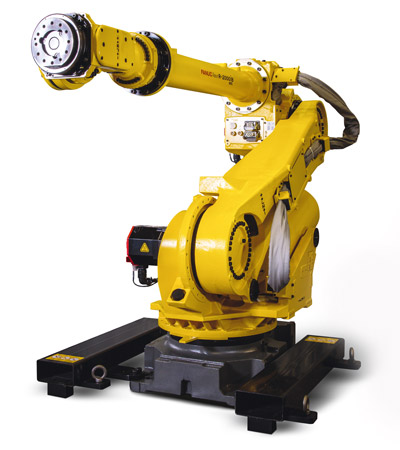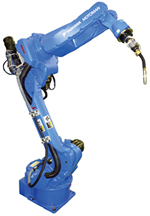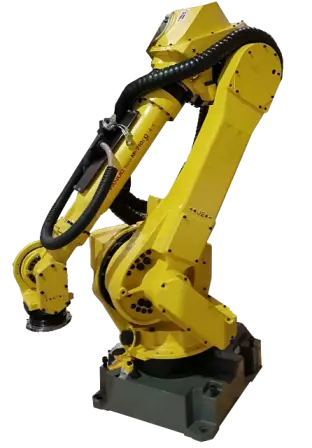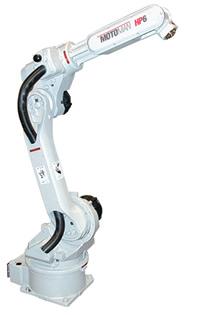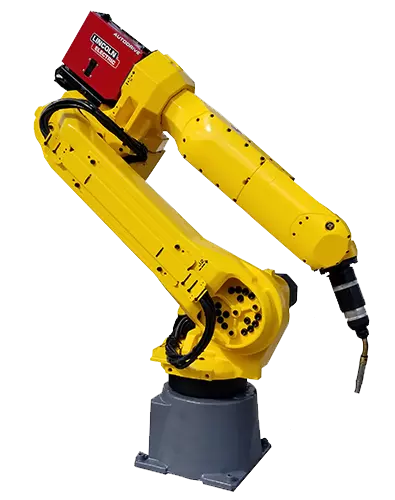Benefits of Robotic Applications
The use of industrial robots is on the rise in today’s manufacturing world and is expected to continue to grow at a rapid rate. You may be wondering why so many are chosing to automate with industrial robots. It is because of the many benefits of robotic applications.
Increased Productivity
Robotic applications allow manufacturers to achieve higher productivity levels. Industrial robots operate at faster speeds than humans without unnecessary stoppages. This allows for higher throughput rates as more parts are able to move through a production process in less time. In addition, robotic applications can double operation hours by turning a twelve-hour facility into a twenty-four-hour facility. The additional operation time is how robots increase productivity Manufacturers looking to increase productivity can benefit greatly by converting manual processes into robotic ones through automation with a FANUC Arcmate 120ic or an ABB IRB 2600.Improved Operation Efficiency
Operation efficiency can be immensely improved through the adoption of robotic applications. Robotic applications often result in reduced cycle times, meaning products reach consumers in shorter amounts of time. Industrial robots are also able to take on more work than humans. One FANUC M-900ia/350 is capable of handling the workload of three of four workers. Fewer robots are needed to match or exceed the productivity levels of manual processes. Many robots are designed to perform more than one type of robotic application to further enhance operation efficiency. For instance, a Motoman MH50-20 can be deployed for both plasma welding and plasma cutting applications.Reduced Costs
The need to reduce costs is often one of the main drivers behind the decision to automate with industrial robots and one of the key benefits of robotic applications. Robotic applications are more accurate and precise than manual ones since they run from programmed specifications. This eliminates costs resulting from errors and wasted materials. The reduced cycle times also help to save money since products are able to reach consumers faster. The shorter the amount of manufacturing time the better it is for a company’s bottom line. Reductions in cost allow for expanding manufacturing capabilities with robots. Robotic applications can also reduce labor costs since robots do not require a salary, benefits, or work-related injury compensation. Facility costs are cut as robots can operate in low light or hot/cold temperatures helping companies save on their utilities.Improved Worker Safety
Many manufacturing jobs are hazardous to the health and well-being of workers. They may involve the lifting and handling of heavy equipment or workpieces which can be grueling and potentially lead to worker injuries. Robots like the FANUC R-2000ib can perform foundry applications removing workers from this operations. These jobs may also involve working with harsh chemicals or fumes that can be detrimental and have long-term health implications. Replacing manual processes with robotic applications removes workers from unsafe conditions and improves the overall safety of your workforce using robots. Delays in productions due to injury, fatigue, or sickness become obsolete with robotic applications. Manufacturers can rely on robots to successfully complete tasks regardless of work area hazards.Increased Product Quality
Producing consistent high-quality products is vital to the survival of any manufacturer in today’s global markets. Robotic applications are programmed for accuracy and high repeatability to elevate product quality. All products manufactured by robots meet the same quality standards and will not deviate from one another. Robotic applications provide quality control that is unmatched by manual processes.Robots Done Right is the place to start when it comes to used robots. Contact us if you are interested in buying or selling your used robot.
